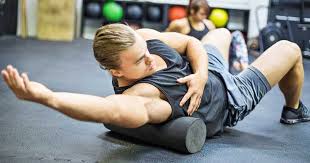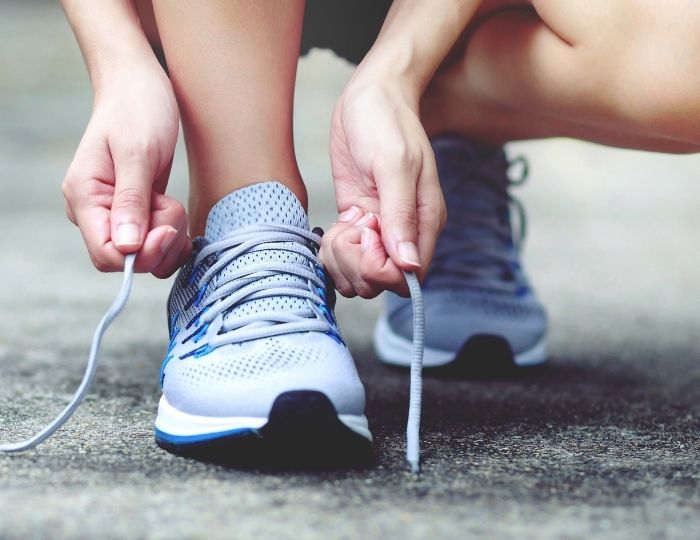Understanding post-workout soreness, commonly known as delayed onset muscle soreness (DOMS), is essential for anyone engaged in physical activity. This article explores the causes of DOMS, the signs and symptoms to recognize, effective strategies for managing muscle pain, and nutritional support for recovery. By addressing these key aspects, you will gain valuable insights into how to alleviate discomfort and enhance your recovery process after intense workouts.
Whether you are a seasoned athlete or a casual exerciser, knowing how to identify and manage post-workout soreness can significantly improve your fitness journey. This knowledge will empower you to make informed decisions about your training and recovery, ultimately helping you achieve your fitness goals more effectively.
In this article you will find:
Causes of Post-Workout Soreness Explained
Post-workout soreness, often referred to as delayed onset muscle soreness (DOMS), can be a perplexing yet common experience for fitness enthusiasts and casual exercisers alike. Understanding the underlying causes of this muscle discomfort is essential for effective recovery and improved performance. In this section, we will delve into the key factors that contribute to post-workout soreness, shedding light on the physiological processes at play.
Muscle Fiber Damage
One of the primary causes of post-workout soreness is muscle fiber damage. When you engage in physical activities, especially those that are new or more intense than your usual routine, your muscles undergo microscopic tears. This damage is a normal part of the muscle-building process, leading to muscle hypertrophy as the fibers repair and strengthen over time. The soreness you feel is a result of the inflammatory response triggered by this muscle damage, which helps facilitate healing.
Inflammation and Repair Process
Following muscle fiber damage, your body initiates an inflammatory response. This process involves the release of various substances, including cytokines and prostaglandins, which play a critical role in healing. While inflammation is necessary for recovery, it can also contribute to the sensation of soreness. The accumulation of fluid and white blood cells in the affected area can lead to swelling and discomfort, making it essential to manage this response effectively.
Type of Exercise Matters
The type of exercise performed significantly impacts the degree of soreness experienced. eccentric exercises, which involve lengthening the muscle under tension (such as the lowering phase of a bicep curl), are particularly notorious for causing DOMS. In contrast, concentric exercises (where muscles shorten during contraction) typically result in less soreness. Understanding the nature of your workouts can help you anticipate and manage soreness more effectively.
Muscle Conditioning and Adaptation
Your body adapts to physical stress over time, which means that the more consistently you engage in a specific type of exercise, the less soreness you will experience. This phenomenon is known as muscle conditioning. If you frequently change your workout routine or increase the intensity, your muscles may not be adequately conditioned to handle the new stress, leading to increased soreness. Gradually progressing your workouts can help mitigate this effect.
Individual Factors
It’s important to recognize that individual factors also play a significant role in post-workout soreness. Genetics, age, fitness level, and even diet can influence how your body responds to exercise. For instance, older adults may experience more pronounced soreness due to age-related muscle loss and slower recovery processes. Additionally, a diet lacking in essential nutrients can hinder muscle repair and exacerbate soreness.
In conclusion, understanding the causes of post-workout soreness is crucial for anyone looking to optimize their fitness journey. By recognizing the physiological processes involved, you can take proactive steps to manage and alleviate discomfort. In the next section, we will explore the signs and symptoms of delayed onset muscle soreness, helping you identify when to take action and when to allow your body to recover naturally.
Signs and Symptoms of Delayed Onset Muscle Soreness
Delayed onset muscle soreness (DOMS) is a common experience for those who engage in physical activity, especially after intense workouts or new exercise routines. Recognizing the signs and symptoms of DOMS is essential for effective recovery and informed decision-making regarding your fitness regimen. In this section, we will explore the various indicators of DOMS, helping you distinguish it from other types of muscle pain.
Understanding the Timeline of DOMS
One of the hallmark characteristics of DOMS is its timing. Unlike immediate muscle soreness that occurs during or right after exercise, DOMS typically manifests within 12 to 24 hours post-exercise, peaking around 48 hours after the workout. This delayed onset can often catch individuals off guard, as they may feel fine immediately after their workout, only to experience soreness the next day.
Common Symptoms of DOMS
The symptoms of DOMS can vary in intensity and duration, but they generally include:
- Muscle Tenderness: A noticeable sensitivity in the affected muscles, especially when touched or contracted.
- Stiffness: A feeling of tightness or reduced range of motion in the muscles, making movements more difficult.
- Swelling: Mild inflammation can occur in the affected areas, contributing to discomfort.
- Muscle Weakness: A temporary decrease in strength and performance, often felt during subsequent workouts.
- Pain with Movement: Discomfort that intensifies with activities involving the affected muscles, such as walking, running, or lifting.
Distinguishing DOMS from Other Types of Pain
It’s crucial to differentiate DOMS from other types of muscle pain, such as acute injuries or chronic conditions. Here are some key distinctions:
- DOMS: Develops gradually, peaks within 48 hours, and is associated with recent exercise.
- Acute Injuries: Often occur suddenly during activity, accompanied by sharp pain, swelling, and potential bruising.
- Chronic Pain: Persists over time, may not correlate with recent exercise, and often involves ongoing discomfort.
If you experience sharp or persistent pain that does not fit the pattern of DOMS, it is advisable to consult a healthcare professional for evaluation.
Psychological Impact of DOMS
In addition to physical symptoms, DOMS can also have a psychological impact. Many individuals may feel discouraged by the discomfort, fearing that it signifies a serious injury or a setback in their fitness journey. Understanding that DOMS is a normal response to exercise can help alleviate anxiety and promote a more positive mindset toward training. Embracing the discomfort as a sign of progress can be empowering and motivating.
To learn more about how to manage DOMS effectively, including strategies for alleviating symptoms and promoting recovery, continue to the next section on effective strategies for managing muscle pain.
Effective Strategies for Managing Muscle Pain
Managing muscle pain, particularly delayed onset muscle soreness (DOMS), is essential for maintaining an active lifestyle and ensuring optimal recovery after workouts. Fortunately, there are several effective strategies that can help alleviate discomfort and promote healing. In this section, we will explore various methods to manage muscle pain, focusing on practical and evidence-based approaches.
Active Recovery Techniques
Active recovery involves engaging in low-intensity exercise to promote blood flow and facilitate recovery without overexerting your muscles. Activities such as walking, cycling, or gentle yoga can help reduce muscle stiffness and soreness. The key is to keep the body moving, which can enhance circulation and support the delivery of nutrients to the muscles.
Stretching and Mobility Exercises
Incorporating stretching and mobility exercises into your routine can significantly help manage muscle pain. Gentle stretching can improve flexibility, reduce tightness, and enhance overall muscle function. Consider the following approaches:
- Static Stretching: Hold stretches for 15-30 seconds post-workout to improve flexibility and relieve tension.
- Dynamic Stretching: Incorporate dynamic stretches before workouts to prepare muscles and joints for activity.
- Foam Rolling: Use a foam roller to perform self-myofascial release, targeting sore muscles and knots to alleviate tightness.
Hydration and Nutrition
Proper hydration and nutrition play a vital role in muscle recovery and pain management. Dehydration can exacerbate muscle soreness, while a well-balanced diet supports healing. Here are some key nutritional strategies:
- Stay Hydrated: Aim to drink plenty of water before, during, and after workouts to maintain optimal hydration levels.
- Protein Intake: Consume adequate protein to support muscle repair and growth. Aim for a source of protein within 30 minutes after exercising.
- Anti-Inflammatory Foods: Incorporate foods rich in omega-3 fatty acids (such as salmon and walnuts), antioxidants (like berries and leafy greens), and spices (like turmeric) to help reduce inflammation.
Cold and Heat Therapy
Utilizing cold and heat therapy can also provide relief from muscle soreness. Cold therapy can help reduce inflammation and numb sharp pain, while heat therapy can increase blood flow and relax tight muscles. Here’s how to use both effectively:
- Cold Therapy: Apply ice packs to sore areas for 15-20 minutes, especially within the first 48 hours after intense exercise.
- Heat Therapy: Use a heating pad or warm towel on sore muscles after the initial inflammation has subsided to promote relaxation and blood flow.
Consider Dietary Supplements
In some cases, dietary supplements can be beneficial in managing muscle pain and enhancing recovery. While it’s essential to consult with a healthcare professional before starting any supplement regimen, consider the following options:
- Branched-Chain Amino Acids (BCAAs): These can help reduce muscle soreness and promote recovery.
- Omega-3 Fatty Acids: Known for their anti-inflammatory properties, they can aid in reducing muscle soreness.
- Curcumin: The active compound in turmeric has been shown to possess anti-inflammatory effects, potentially alleviating muscle pain.
Incorporating these strategies into your post-workout routine can greatly enhance your recovery experience and help manage muscle pain effectively. In the next section, we will discuss the importance of nutrition in supporting recovery and pain relief, providing insights into how what you eat can impact your muscle health.
Nutritional Support for Recovery and Pain Relief
Nutrition plays a pivotal role in the recovery process following intense workouts and in managing muscle pain. The right nutrients can enhance muscle repair, reduce inflammation, and provide the energy necessary for recovery. In this section, we will explore the essential nutrients and dietary strategies that support recovery and alleviate pain, ensuring you can bounce back stronger after every workout.
Key Nutrients for Muscle Recovery
To optimize recovery and minimize muscle soreness, focus on incorporating the following key nutrients into your diet:
- Protein: Essential for muscle repair and growth, protein should be a cornerstone of your post-workout nutrition. Aim for a source of high-quality protein within 30 minutes after exercising. Options include lean meats, fish, dairy, eggs, or plant-based sources like legumes and tofu.
- Carbohydrates: Carbs replenish glycogen stores depleted during exercise. Include complex carbohydrates such as whole grains, fruits, and vegetables to provide sustained energy for recovery.
- Healthy Fats: Omega-3 fatty acids have anti-inflammatory properties that can help reduce muscle soreness. Sources include fatty fish (like salmon), flaxseeds, walnuts, and chia seeds.
Hydration and Its Importance
Staying hydrated is crucial for recovery. Dehydration can exacerbate muscle soreness and hinder the recovery process. Consider these hydration tips:
- Water Intake: Drink plenty of water before, during, and after workouts to maintain optimal hydration levels.
- Electrolytes: Replenish lost electrolytes through sports drinks or natural sources like coconut water, especially after prolonged or intense exercise.
Anti-Inflammatory Foods
Incorporating anti-inflammatory foods into your diet can significantly aid in reducing muscle pain and promoting recovery. Some of the most effective options include:
- Berries: Rich in antioxidants, berries like blueberries and strawberries can help combat oxidative stress and inflammation.
- Leafy Greens: Vegetables such as spinach and kale are packed with vitamins and minerals that support overall health and recovery.
- Turmeric: This spice contains curcumin, known for its powerful anti-inflammatory properties. Adding turmeric to your meals can help alleviate soreness.
- Ginger: Similar to turmeric, ginger has anti-inflammatory effects and can be consumed fresh, in teas, or as a spice in cooking.
Timing Your Nutritional Intake
Timing your meals and snacks around your workouts can enhance recovery. Consider the following strategies:
- Pre-Workout Nutrition: Consume a balanced meal or snack containing carbohydrates and protein 1-2 hours before exercising to fuel your workout.
- Post-Workout Nutrition: Aim for a meal or snack rich in protein and carbohydrates within 30 minutes after your workout to maximize recovery.
Consider Supplements Wisely
While whole foods should be your primary source of nutrients, certain supplements may provide additional support for recovery and pain relief. Popular options include:
- Branched-Chain Amino Acids (BCAAs): These can help reduce muscle soreness and speed up recovery.
- Omega-3 Supplements: If dietary sources are insufficient, consider omega-3 supplements to support anti-inflammatory responses.
- Vitamin D: Essential for muscle function and recovery, vitamin D can be obtained through sunlight exposure and fortified foods or supplements.
For more detailed information about supplements and their benefits, you can refer to reputable sources like the National Institutes of Health.
By focusing on a balanced diet rich in essential nutrients and employing strategic timing of your meals, you can significantly enhance your recovery process and alleviate muscle pain. Understanding how nutrition supports your body after exercise is crucial for optimizing performance and maintaining overall health. Post-workout soreness, known as delayed onset muscle soreness (DOMS), is primarily caused by muscle fiber damage and the subsequent inflammatory response. This soreness typically peaks 48 hours after intense or new exercise routines, particularly with eccentric movements. Individual factors such as age, genetics, and fitness level also influence the severity of soreness, highlighting the importance of gradual conditioning and adaptation to new workouts.
To manage muscle pain effectively, incorporate active recovery techniques, stretching, and proper hydration and nutrition. Focus on consuming high-quality protein and anti-inflammatory foods, such as berries and turmeric, to support muscle repair. Additionally, timing your meals around workouts—having a balanced snack before and a protein-rich meal after exercise—can enhance recovery. For added support, consider supplements like BCAAs and omega-3 fatty acids, while always prioritizing whole foods for optimal health.




